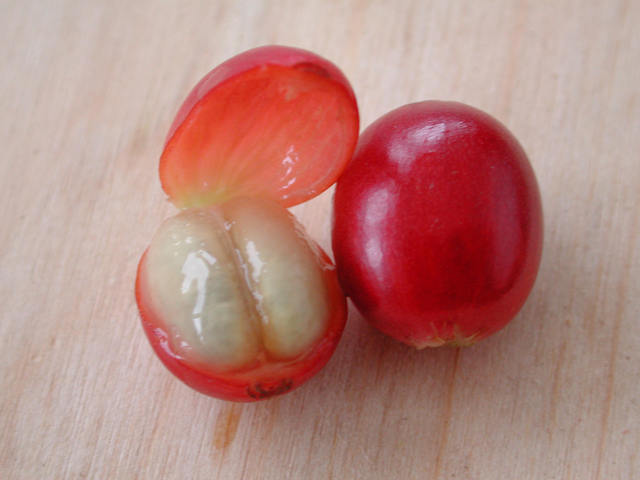The difference between Coffee Bean washing and semi-washing
The washing refining of coffee began in the mid-18th century. In the refining process, the pulp of the coffee fruit is first removed, then the residual mucous membrane on the inner pericarp is removed by a fermentation tank, and the beans are washed and dried. The difference between non-washing refining and water-washing refining is that the non-washing refining method is dried and then the pulp is removed, while the washing method is to remove the pulp and then dry!
The washing refining method can remove impurities and defective beans through each step, so the appearance of raw beans is uniform, is generally considered to be of high quality, and the trading price is higher than that of natural drying coffee beans.
However, the more detailed the division of labor, the more procedures for operation and hygiene management, and the higher the risk, so washing is not necessarily equal to high quality. The biggest disadvantage of washed coffee is that coffee beans are easy to catch the bad smell of fermentation during fermentation. some coffee experts point out that a fermented bean will spoil 50 grams of beans. Beans will be stained with the smell of fermentation, most of which are due to the lack of management and maintenance of the fermentation tank. Soak the coffee beans with mucous membrane on the endocarp in the fermentation tank for one night to remove the mucous membrane. However, if the fermentation tank is not cleaned completely, excessive changes in humidity and temperature will cause changes in the microorganisms in the fermentation tank, which will lead to the fermented taste of the coffee.
The cost of washing equipment is high, and the process and steps of refining are also quite laborious, so the production cost is naturally very high!
Source: happy Coffee Xiao Xu's blog
Important Notice :
前街咖啡 FrontStreet Coffee has moved to new addredd:
FrontStreet Coffee Address: 315,Donghua East Road,GuangZhou
Tel:020 38364473
- Prev

Manual milk foam, primary flower drawing course Italian coffee fancy coffee carving pattern playing milk foam technique
The coffee flower is the process of making leaves or other patterns on the original cappuccino or latte, which is now known as Italian mocha coffee. Italian fancy mocha coffee, by mixing Italian espresso Espresso from 1 to 3, hot milk from 2 to 3, and then adding chocolate. Cappuccino (Cappuccino), also known as foam coffee: one strong
- Next

The treatment process from Coffee Fruit to Coffee Raw beans after picking Coffee Fruit
There are a pair of oval seeds in the center of the coffee fruit, which are covered with outer skin, endocarp and pulp. Ripe fruits rot in a short period of time without treatment, so the purpose of refining is to preserve coffee beans for a long time so that they can be stored and circulated. Refining is to remove the skin and pulp of the coffee fruit, and then take out the seeds. The general methods of refining are drying, washing, and
Related
- Beginners will see the "Coffee pull flower" guide!
- What is the difference between ice blog purified milk and ordinary milk coffee?
- Why is the Philippines the largest producer of crops in Liberia?
- For coffee extraction, should the fine powder be retained?
- How does extracted espresso fill pressed powder? How much strength does it take to press the powder?
- How to make jasmine cold extract coffee? Is the jasmine + latte good?
- Will this little toy really make the coffee taste better? How does Lily Drip affect coffee extraction?
- Will the action of slapping the filter cup also affect coffee extraction?
- What's the difference between powder-to-water ratio and powder-to-liquid ratio?
- What is the Ethiopian local species? What does it have to do with Heirloom native species?

